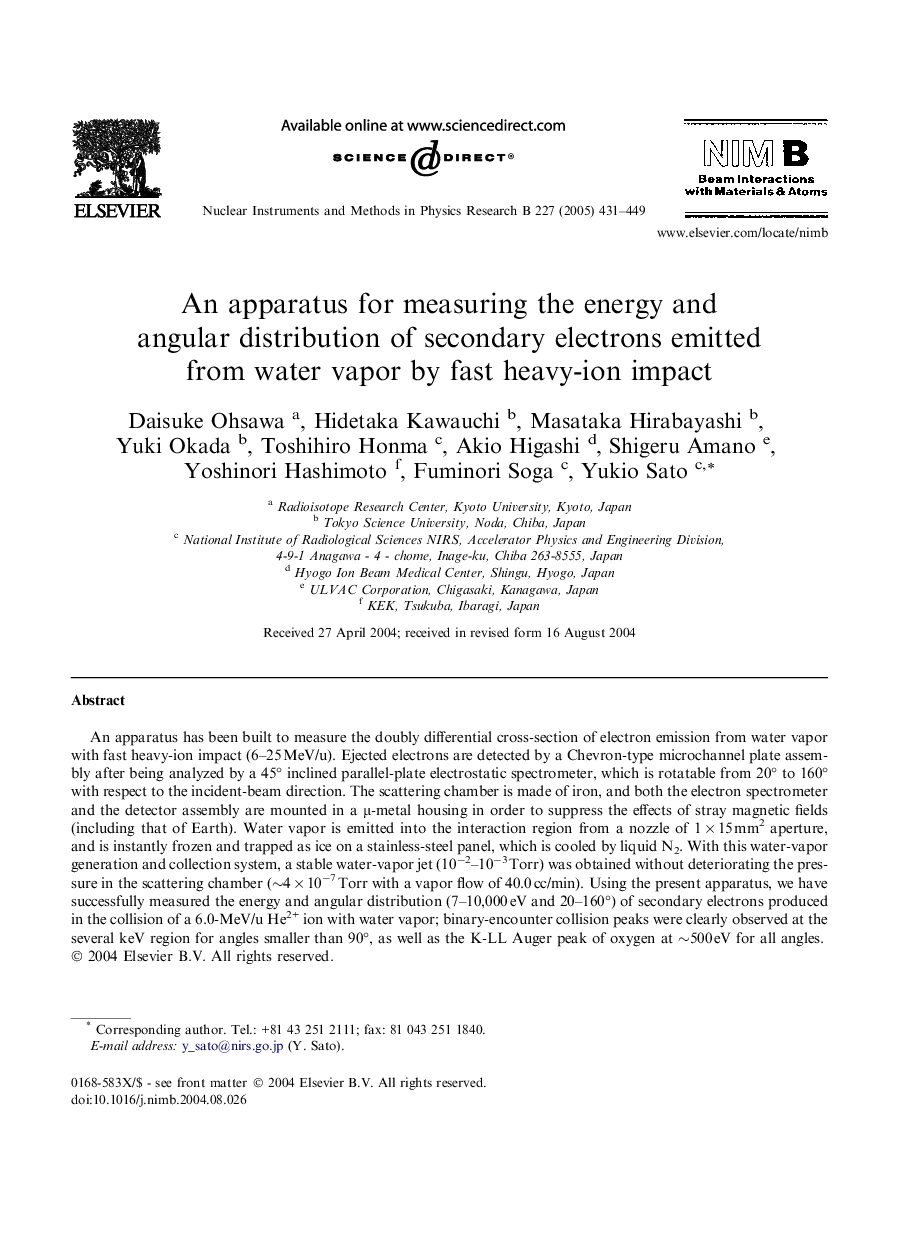| Article ID | Journal | Published Year | Pages | File Type |
|---|---|---|---|---|
| 10675481 | Nuclear Instruments and Methods in Physics Research Section B: Beam Interactions with Materials and Atoms | 2005 | 19 Pages |
Abstract
An apparatus has been built to measure the doubly differential cross-section of electron emission from water vapor with fast heavy-ion impact (6-25 MeV/u). Ejected electrons are detected by a Chevron-type microchannel plate assembly after being analyzed by a 45° inclined parallel-plate electrostatic spectrometer, which is rotatable from 20° to 160° with respect to the incident-beam direction. The scattering chamber is made of iron, and both the electron spectrometer and the detector assembly are mounted in a μ-metal housing in order to suppress the effects of stray magnetic fields (including that of Earth). Water vapor is emitted into the interaction region from a nozzle of 1 Ã 15 mm2 aperture, and is instantly frozen and trapped as ice on a stainless-steel panel, which is cooled by liquid N2. With this water-vapor generation and collection system, a stable water-vapor jet (10â2-10â3 Torr) was obtained without deteriorating the pressure in the scattering chamber (â¼4 Ã 10â7 Torr with a vapor flow of 40.0 cc/min). Using the present apparatus, we have successfully measured the energy and angular distribution (7-10,000 eV and 20-160°) of secondary electrons produced in the collision of a 6.0-MeV/u He2+ ion with water vapor; binary-encounter collision peaks were clearly observed at the several keV region for angles smaller than 90°, as well as the K-LL Auger peak of oxygen at â¼500 eV for all angles.
Related Topics
Physical Sciences and Engineering
Materials Science
Surfaces, Coatings and Films
Authors
Daisuke Ohsawa, Hidetaka Kawauchi, Masataka Hirabayashi, Yuki Okada, Toshihiro Honma, Akio Higashi, Shigeru Amano, Yoshinori Hashimoto, Fuminori Soga, Yukio Sato,
